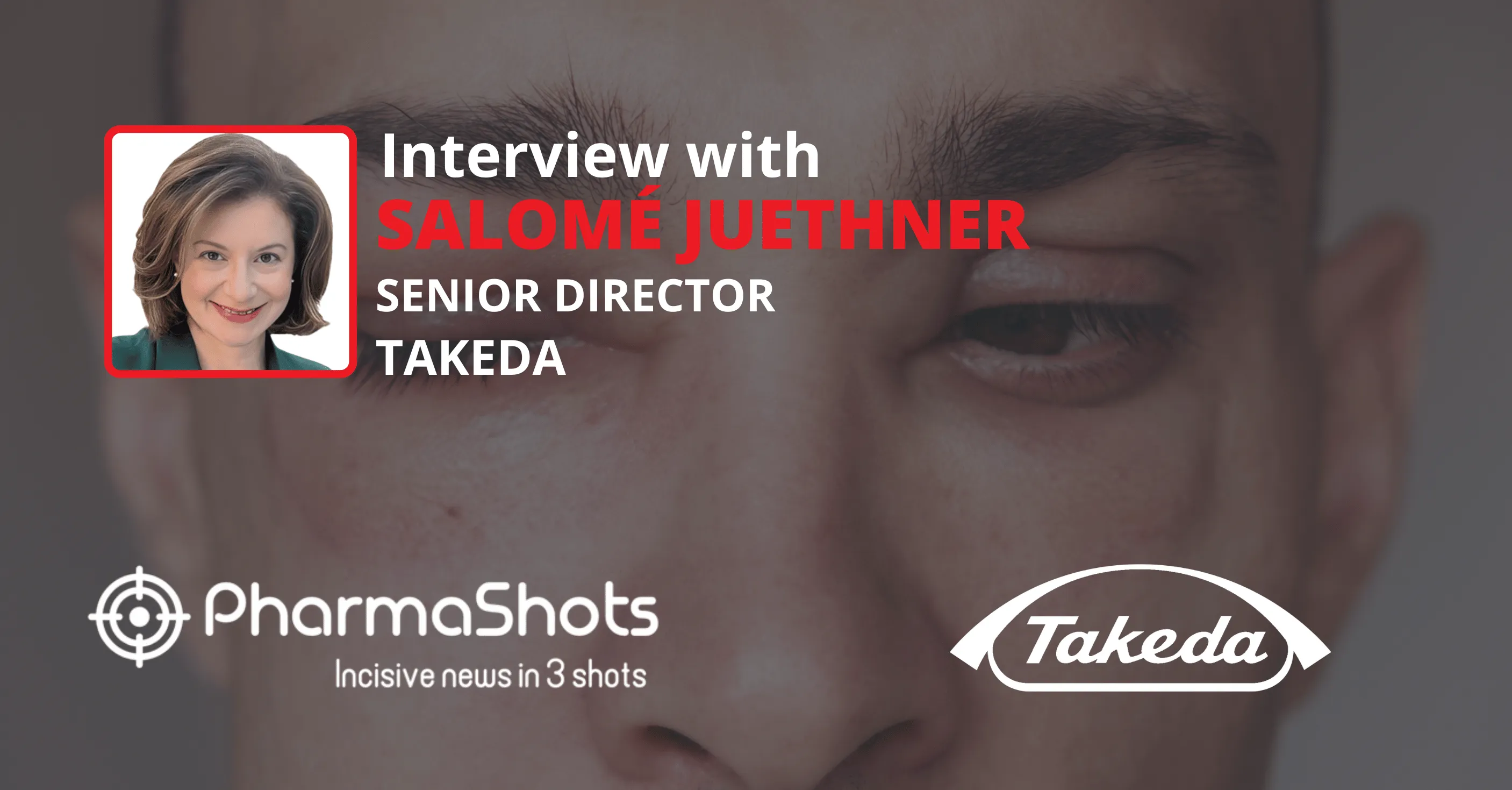
Samantha Kerr shares insights from the topline data of Xeomin P-III studies and pivotal study evaluating Belotero Balance (+)
Shots:
- Samantha Kerr, Chief Scientific Officer, Merz Aesthetics shares insights from the topline data of Xeomin P-III studies and pivotal study evaluating Belotero Balance (+)
- Samantha says, for Belotero Balance (+), Merz Aesthetics has already submitted the data as a supplemental Premarket Approval Application (sPMA) with the FDA and plans to submit the data as a supplemental Biologics License Application (sBLA) to the US FDA this year
- While highlighting the treatment procedure and duration of Xeomin and Belotero Balance (+), Samantha delves into the future of Merz Aesthetics in medical aesthetics
Saurabh: Based on the recently announced positive topline data by Merz Aesthetics, can you please talk about the study design and results of Xeomin P-III studies and the Pivotal Study evaluating Belotero Balance for infraorbital hollows?
Samantha: For Xeomin, the two phase 3, double-blind, placebo-controlled studies included 730 adult participants randomized to receive Xeomin® or placebo. All three upper facial areas (glabellar frown lines, horizontal forehead lines, and lateral canthal lines or crow’s feet lines) were simultaneously treated. Both studies met their primary endpoints, with Xeomin having a significantly higher response rate than placebo at Day 30 for all upper facial line areas. Results showed Xeomin had a rapid onset of action – within a few days ‒ and was well tolerated; all treatment-related adverse events were mild to moderate, and no treatment-related serious adverse events were observed.
For Belotero Balance® (+), the pivotal study enrolled 150 adults with moderate to severe infraorbital hollows. Subjects were randomized to a Belotero Balance (+) treatment group or a delayed treatment/control group. The study met its primary endpoint with Belotero Balance (+) showing superiority over the delayed control group at Week 8. Overall, Belotero Balance (+) was well tolerated in the study, and the safety profile was consistent with previously reported studies.
Saurabh: How do you think that Xeomin’s unique formulation can be beneficial for the continued efficacy in the treatment of upper facial lines?
Samantha: Xeomin is manufactured via a unique precision process called XTRACT Technology™, which uses two filtration steps to isolate the therapeutic component of the molecule and remove complex proteins that don’t play an active role in treatment.
Xeomin’s unique formulation without unnecessary proteins gives it an excellent performance profile. The pivotal study data showed high subject satisfaction, good tolerability, and continued efficacy over multiple treatment cycles.
Saurabh: Could you explain the procedure for giving Xeomin to treat upper facial lines? How many sessions of treatments are required over a specific time period?
Samantha: When a person squints, smiles, raises their eyebrows, or frowns, the muscles contract causing the skin to furrow and fold. Over time, as the skin ages and loses some of its elasticity, these repeated contractions can cause persistent lines. Xeomin works by reducing these contractions, thereby temporarily smoothing the upper facial lines.
Treatment involves a health care provider injecting Xeomin into the muscles of all three upper facial areas (i.e., glabellar frown lines, horizontal forehead lines, and lateral canthal lines or crow’s feet lines) in one treatment session. Treatment typically takes about 10 to 20 minutes.
Based on the phase 3 study data, after the treatment, subjects may begin to see visible smoothing of their upper facial lines within a few days. The typical duration of effect in the phase 3 studies was up to 4 months, but this may vary from individual to individual.
Saurabh: Based on the positive results obtained, what are the next steps for Merz Aesthetics in terms of regulatory approvals and market availability for both Xeomin and Belotero Balance?
Samantha: For Xeomin, Merz Aesthetics will submit the data as a supplemental Biologics License Application (sBLA) to the U.S. Food and Drug Administration (FDA) this year. Additionally, we plan to submit these data to a peer-reviewed journal. If approved, Xeomin would be the first and only neurotoxin approved to treat all three areas of the upper face simultaneously.
For Belotero Balance (+), Merz Aesthetics has submitted the data as a supplemental Premarket Approval Application (sPMA) with the FDA. Similar to Xeomin, Merz Aesthetics is planning to submit these data to a peer-reviewed journal at a later date.
Saurabh: Please brief our readers about infraorbital hollows, and why they are a concern for individuals seeking aesthetic treatments.
Samantha: Infraorbital hollows occur in the area directly under the eye when subcutaneous fat and soft tissue volume diminishes, causing a sunken eye appearance. Infraorbital hollowing can impact a person’s confidence, and so people may seek treatments to improve the appearance of this specific area.
If approved, this indication of Belotero Balance (+) will provide healthcare providers with an opportunity to help people achieve their medical aesthetics goals in this area.
Saurabh: How does Belotero Balance differ from other dermal fillers used for treating infraorbital hollows in terms of product formulation, injection technique, or patient satisfaction?
Samantha: Belotero Balance (+) is a hyaluronic acid injectable filler designed to integrate into facial skin tissue. The unique manufacturing process for Belotero Balance (+) yields a soft and cohesive gel that, once injected, instantly fills the skin to restore lost volume. In the pivotal study, all subjects self-reported improvement on the Global Aesthetic Improvement Scale.
Saurabh: In terms of treatment duration, how long can the effects of Belotero Balance for infraorbital hollows last? Are maintenance treatments required?
Samantha: Individual results may vary, but Belotero Balance (+) may last 6 months or more. The amount of product used and the area it is injected into impact how long the filler lasts. For infraorbital hollows, the pivotal study followed study subjects for 48 weeks after their last treatment, and the majority of subjects were still responding to treatment.
Saurabh: Looking ahead, what are the future plans for Merz Aesthetics' medical aesthetics or other skincare treatments?
Samantha: Merz Aesthetics eagerly anticipates regulatory approval from the FDA for both Xeomin for upper facial lines and Belotero Balance (+) for infraorbital hollows. As an organization, we continuously ask ourselves how we can best respond to our customers’ growing and changing needs, and our full portfolio reflects the dynamic field of medical aesthetics.
Recent Update: Belotero Balance for infraorbital hollows has recently been approved by the US FDA.
Image Source: Canva
About the Author

Samantha Kerr
Dr. Samantha Kerr joined Merz Aesthetics in March 2020 as chief scientific officer. She leads the research and development team by setting and executing our scientific strategy.
Dr. Kerr has over 20 years of demonstrated success and leadership in medical aesthetics across a variety of roles. She previously served as the vice president, global area head of medical devices, aesthetics at Allergan. During this time, she led the design, development and execution of global programs, focusing on the U.S., EU, China and Japan. Previously at Allergan, Dr. Kerr was the vice president, head of development, where she led the EMEA and Asia Pacific clinical operations team. In this position, she grew pharma and device programs from early stages to launch. She later joined TMC Pharma Services Ltd., where she served as chief operating officer.
Dr. Kerr earned her Bachelor of Science Honours degree in biochemistry and immunology at the University of Strathclyde. She also earned her Ph.D. from the University of Glasgow in Glasgow, Scotland and completed a genetics and genomics certification at Stanford University in Stanford, California.
She is passionate about women’s empowerment and representation in STEM fields. In 2022, Dr. Kerr was honored by the Triangle Business Journal as a CEO of the Year and C-suite award winner.
Through her commitment to the future of research and development, Dr. Kerr upholds the Merz Aesthetics culture of innovation.
Tags

Saurabh is a Senior Content Writer at PharmaShots. He is a voracious reader and follows the recent trends and innovations of life science companies diligently. His work at PharmaShots involves writing articles, editing content, and proofreading drafts. He has a knack for writing content that covers the Biotech, MedTech, Pharmaceutical, and Healthcare sectors.













